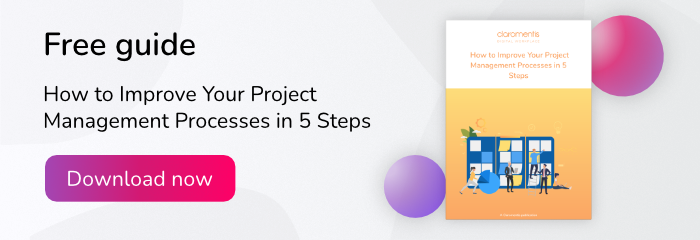Interest in BPM (business process management) workflow automation has risen recently. Given the post-COVID landscape we find ourselves in, this isn’t surprising.
More teams work in a remote setting, uncertainty caused by world events still looms large, and businesses are experiencing unprecedented difficulty in retaining employees. Business process management helps resolve these difficulties by documenting and optimising key processes and capturing unwritten operational knowledge, so it stays in your business for the long-term.
Below, we lay out what BPM is and how workflow automation supports it, whilst providing examples of how BPM could work wonders for your organisation.
What is a BPM workflow?
BPM is a set of practices designed to record, optimise and improve the business processes that are central to your organisation.
At the core of business process management, according to the Enterprisers Project, is the need to capture what would normally be considered “operational knowledge” or “institutional IQ”. All too often, this sort of knowledge isn’t shared by employees and so leaves with them when they move on.
“BPM is a layered practice concerned with codifying, optimising and continuously improving operations or processes – especially of the sort that would otherwise be thought of as ad hoc solutions or the type of ‘institutional IQ’ that walks out the door when people leave.”
The ability to codify and optimise responses to ad-hoc situations has made BPM a major pillar of organisational COVID policies across the globe and is set to remain central to emergency response planning in the long term. Perhaps that’s why the BPM industry experienced growth of 11.2% globally in 2020, and is predicted to grow from $11.84bn in 2021 to $26.18bn in 2028.
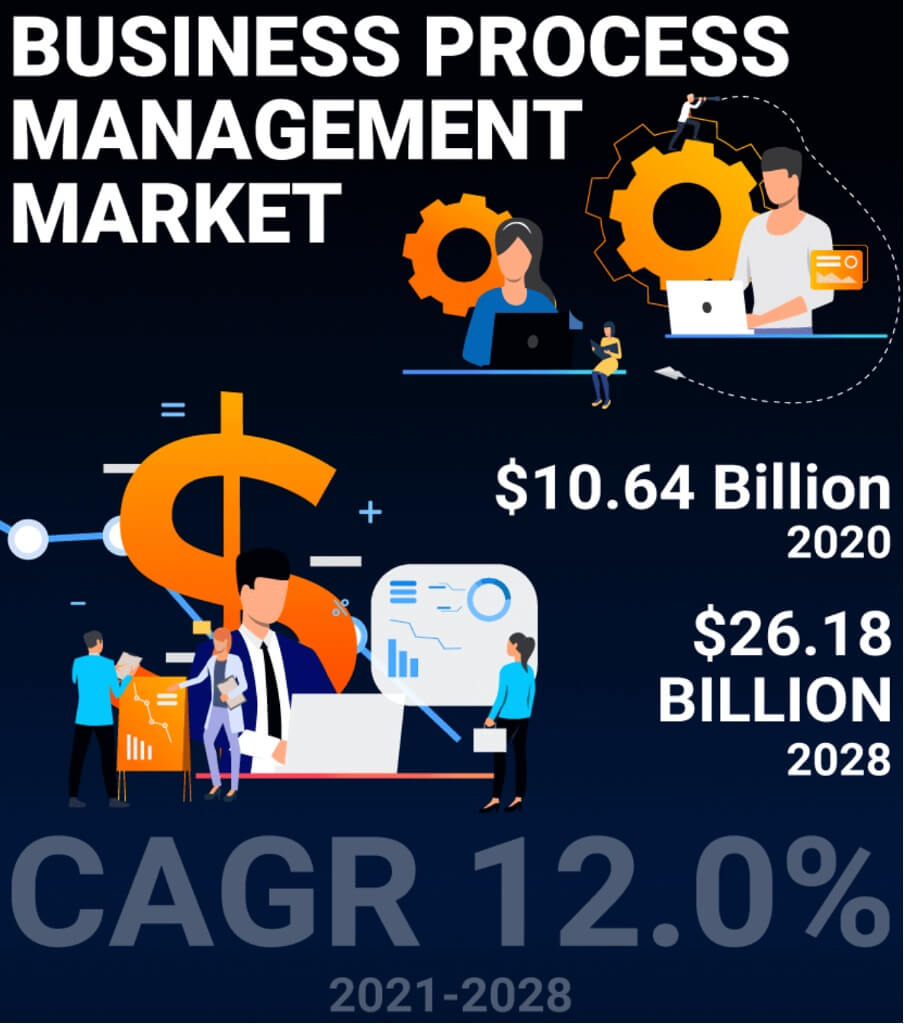
(Image source: fortunebusinessinsights.com)
BPM and workflows: How they work together
A workflow is a set of processes through which an individual task passes from ideation to completion. For example, when booking leave, an employee raises a request with their line manager, who checks the dates and approves it.
BPM focuses on these individual workflows through a wider, strategic lens. Using BPM, you can link your leave management workflows to several others across the business. For example, you could automatically notify payroll to update leave balances and alert line managers to find appropriate cover and regenerate shift rotas.
In other words, each workflow represents a building block of your BPM processes. BPM brings lots of workflows together to create a strategic set of actions that optimise performance across your business.
You can find this reflected in BPM vs workflow software functions.
Workflow automation or workflow management software aims to automate a single workflow at a time, whereas BPM software connects and evaluates business activities and workflows to improve efficiency. BPM software like Claromentis’s Business Process Management Platform has all the functionality you need to create and automate all manner of business workflows with business rules, including (though not limited to):
- Help desks
- Purchase order requests
- Stationary requests
- Appraisal forms
- Exit interviews
- Onboarding new staff
What is an example of BPM?
BPM is used to map business processes across the entire organisation. In the BPM example below, the workflows involved in renting a car are mapped out across different areas or departments in the business.
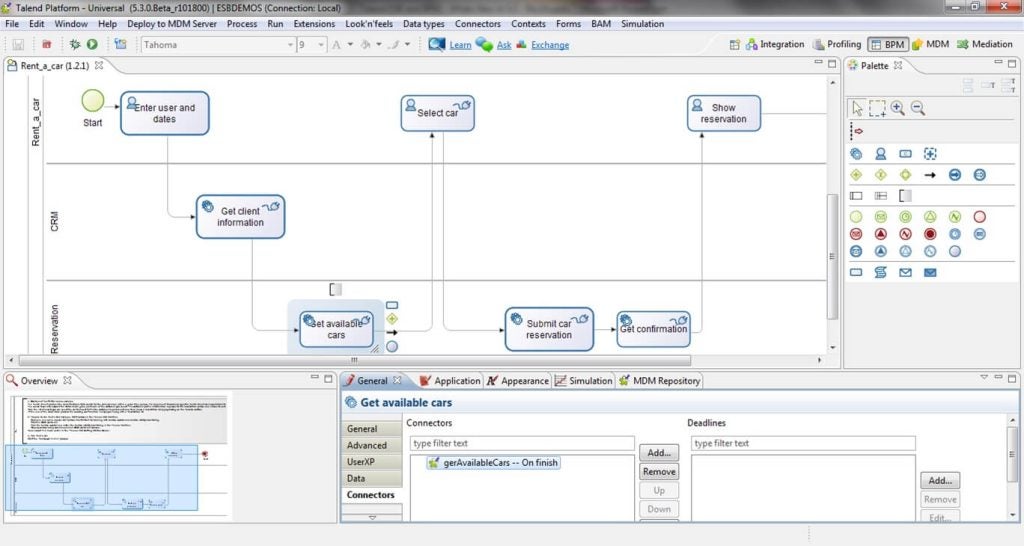
(Source: https://www.stakeholdermap.com/)
Here, you can clearly see the processes you can automate with BPM software. For example, you could automate the administrative tasks surrounding customer data entry and vehicle selection confirmation.
Elsewhere, the impact of effective BPM can be felt keenly in your HR team, where a focus on workflow automation can have a huge impact on business efficiency.
HR departments usually have a significant burden of paper-based administrative tasks – a BPM platform allows these to be completed more quickly and with fewer errors.
By using a BPM platform like Claromentis, your HR team can:
- Reduce manual data entry across the entire department
- Update payslips automatically with leave balance and days worked without need for manual input from multiple stakeholders
- Oversee leave management and other benefits-related processes more effectively
- Solidify emergency communications responses, so that your business can respond quickly and effectively when the unexpected happens
- Easily create bespoke e-forms and workflows to optimise business processes
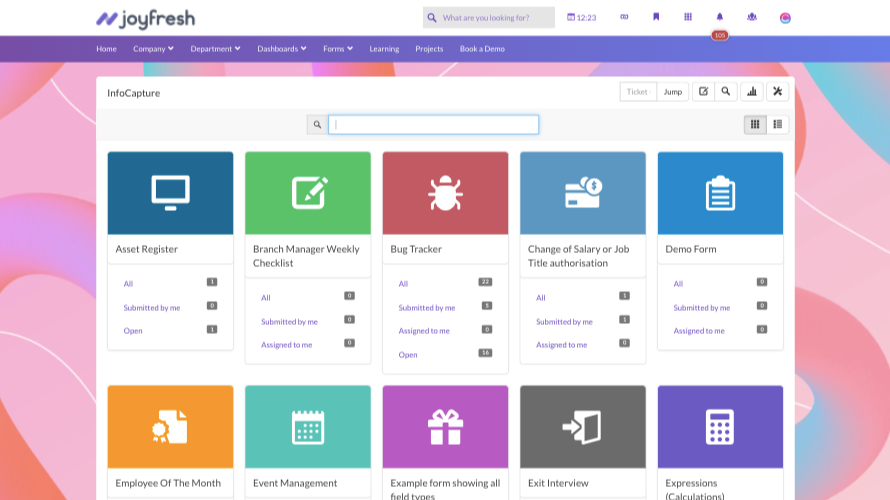
(Image source: claromentis.com)
What are BPM activities?
Effective BPM relies heavily on workflow automation to realise maximum operational efficiency. To automate important processes effectively, there are a range of BPM activities your teams will need to complete. These activities can be grouped into four main areas.
Design
Design covers identification of processes to manage, including creating visual representations of process flows, standard operating procedures, service level agreements and task hand-over mechanisms.
Modelling
Once you have created a theoretical design, the next step is building a model for the process you want to manage. This allows you to analyse how the process might perform under different variables – for example, changes in availability of materials, wage inflation, or staffing levels.
Execution
After designing and modelling your processes, the next step is executing them effectively. You can choose to fully automate a process, keep it entirely manual, or opt for a hybrid approach. BPM software allows you to create business rules to govern automated processes and a business rule engine can be used to drive process execution and resolution.
Monitoring and optimisation
Monitoring how each process performs is a vital part of any BPM strategy, as it allows any issues to be identified and corrected. Many BPM platforms offer real-time analytics to help you do this.
The data generated at this stage can then be used to optimise the process. Revisit the design, modelling and execution phases with the conclusions you can draw from the data and retest any improvements you implement.
Final thoughts
Business process management relies on workflows to govern individual series of tasks that complete a specific action. These actions form processes, which are monitored and improved by BPM activities.
Modern BPM enables a significant degree of automation to maximise efficiency gains across the business. A solid approach, encompassing structured design, modelling, execution and monitoring/optimisation phases is fundamental to BPM success.
With the Claromentis BPM Platform, our smart workflow technology ensures your business processes run as smoothly and efficiently as possible. With our workflow automations, you can create all manner of business rules that trigger automatic updates on workflow events, saving your organisation time, resources, and paperwork right across the board.
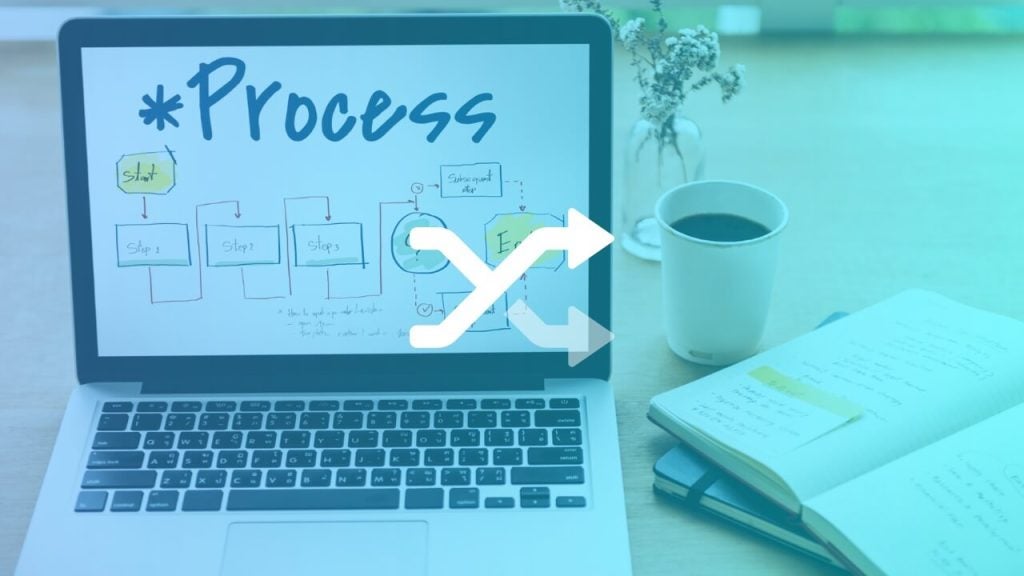
![[FREE GUIDE] How to Improve Your Project Management Processes in 5 Steps](https://no-cache.hubspot.com/cta/default/5025095/39f7568f-5072-4c75-b782-89ea84fe2a87.png)
